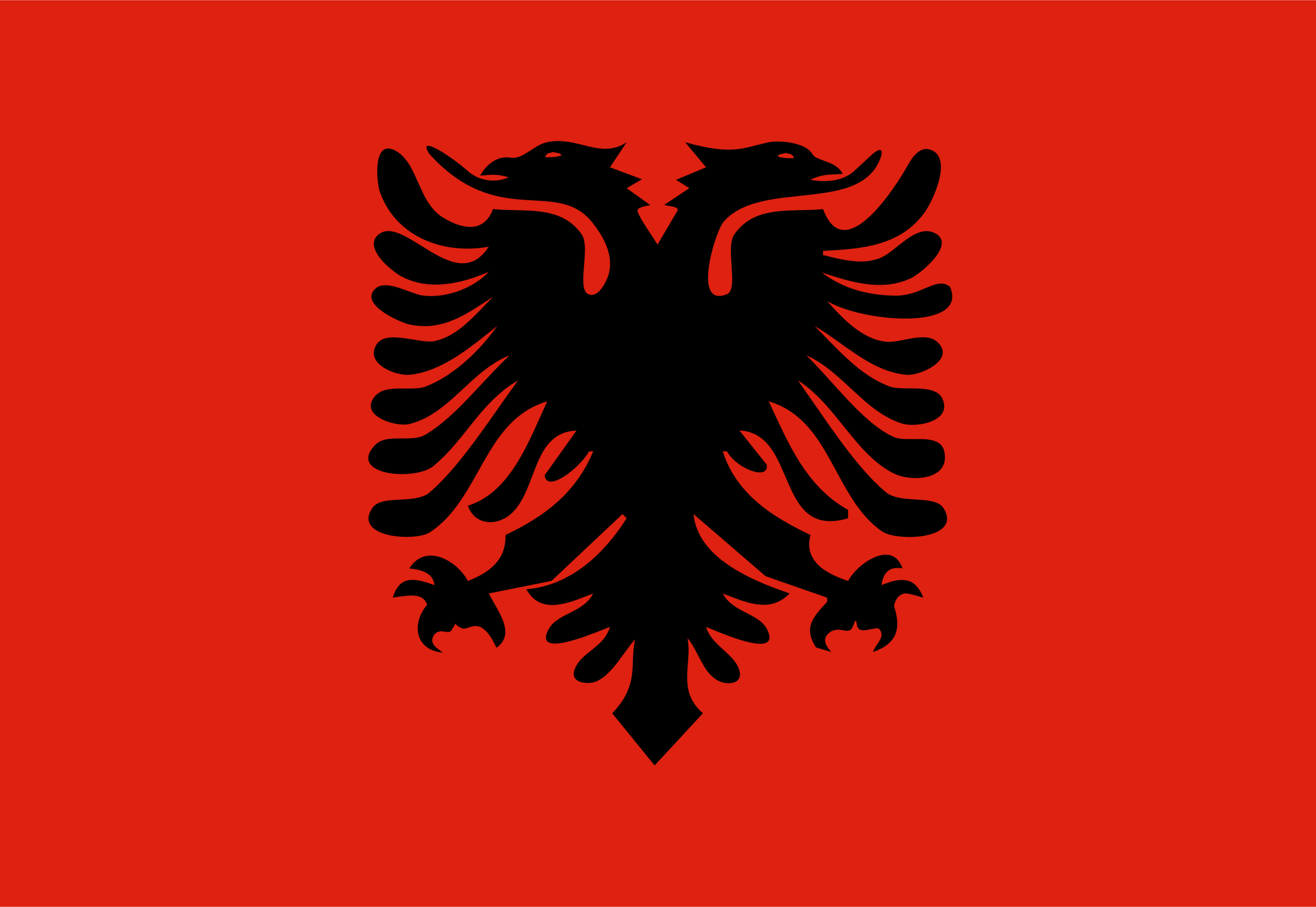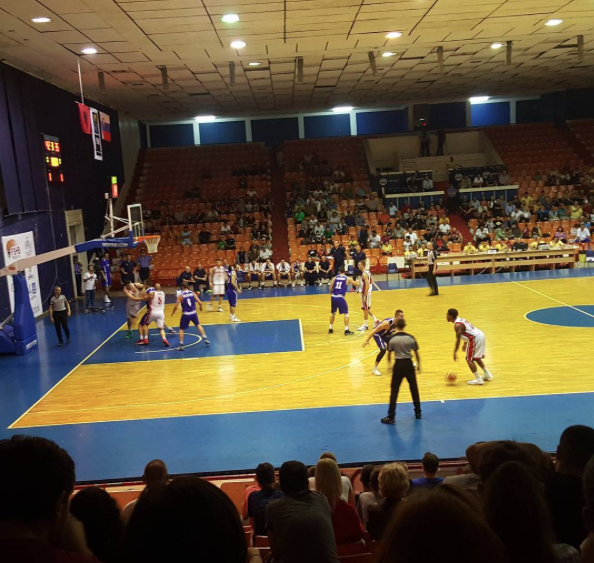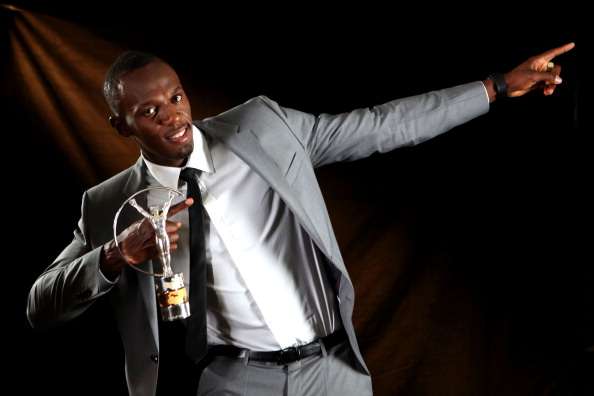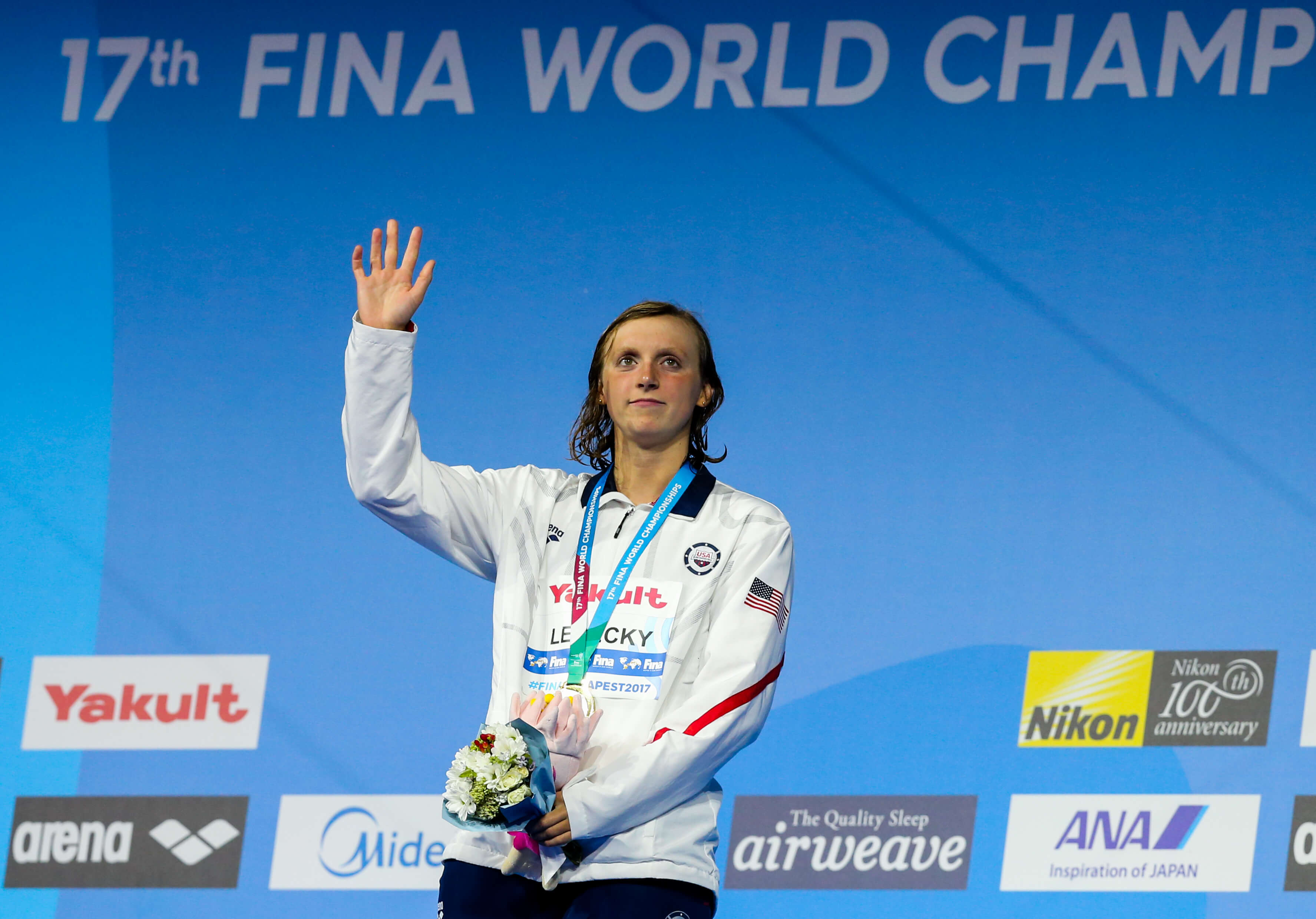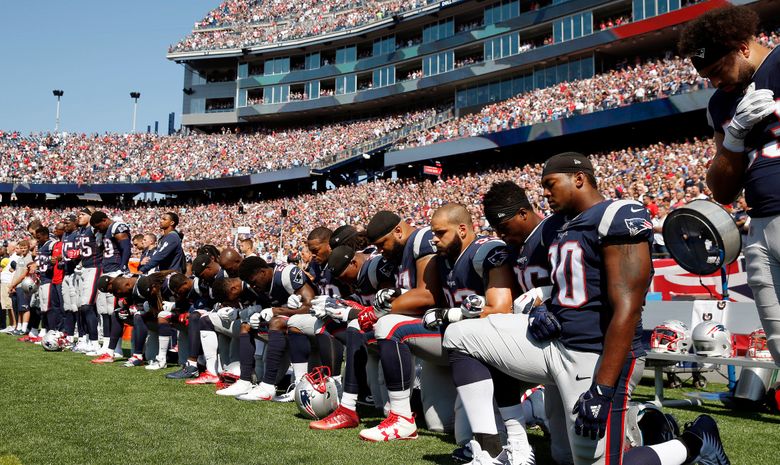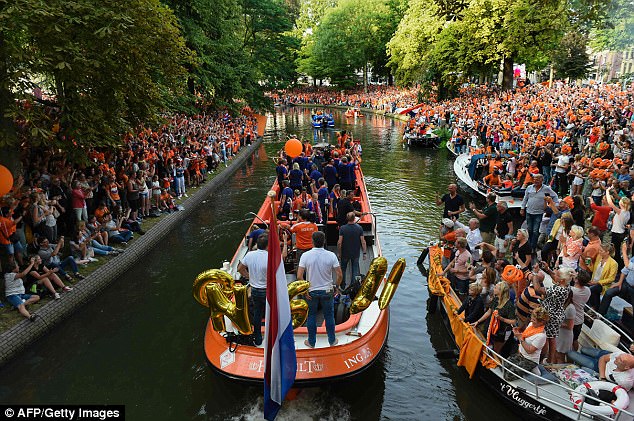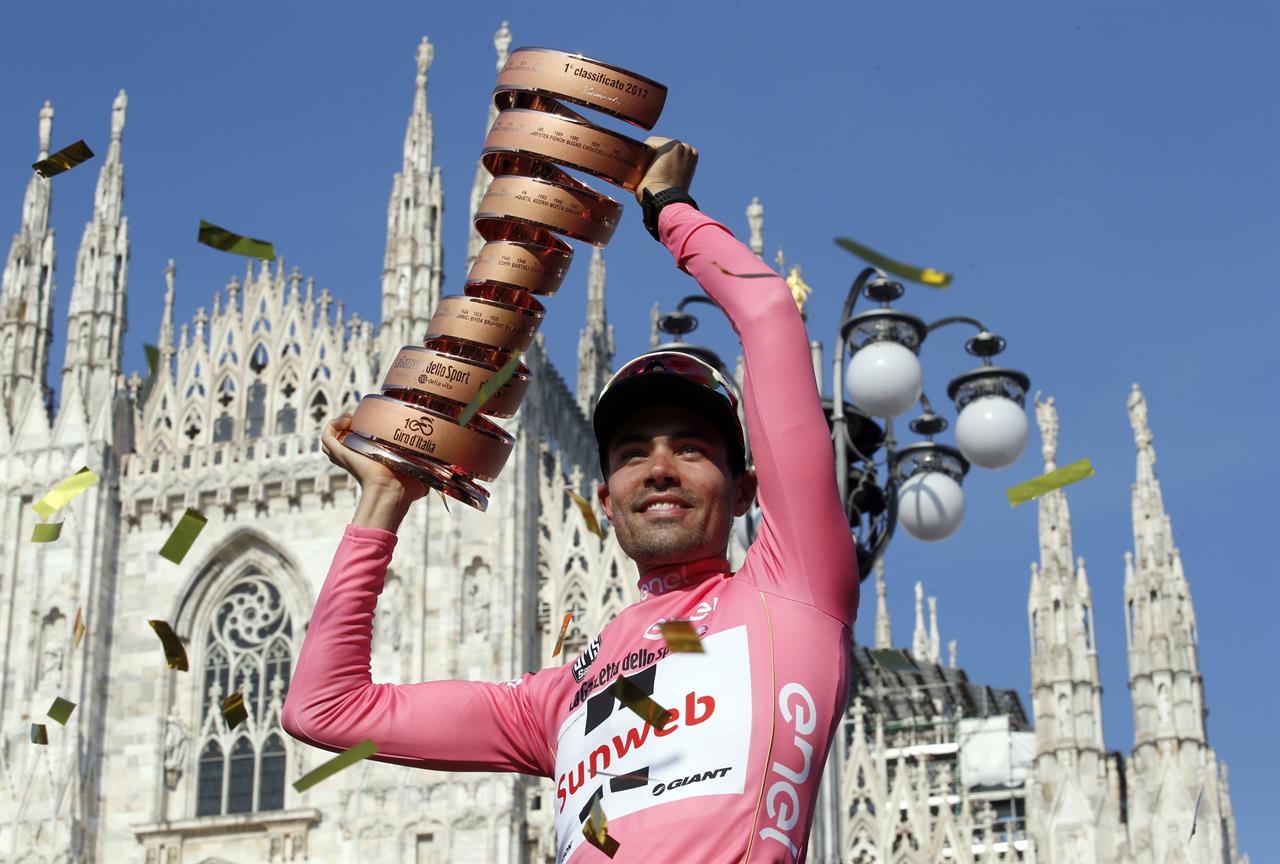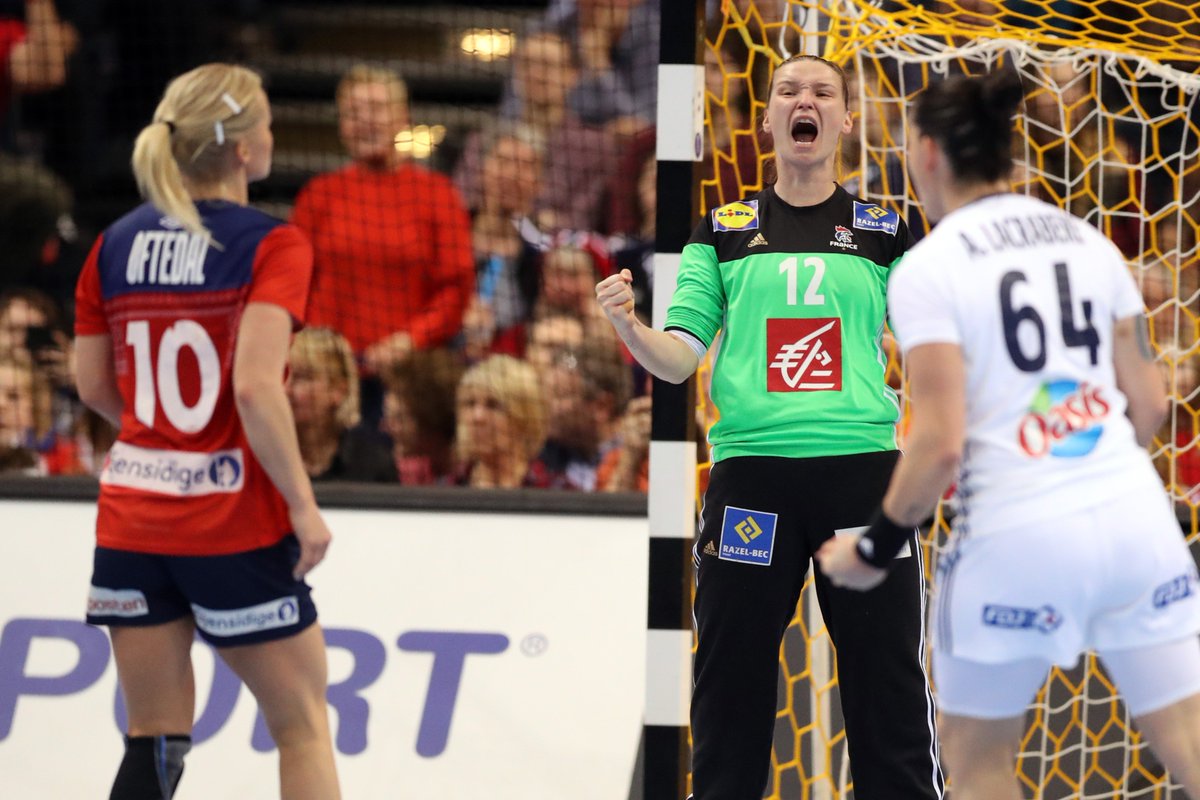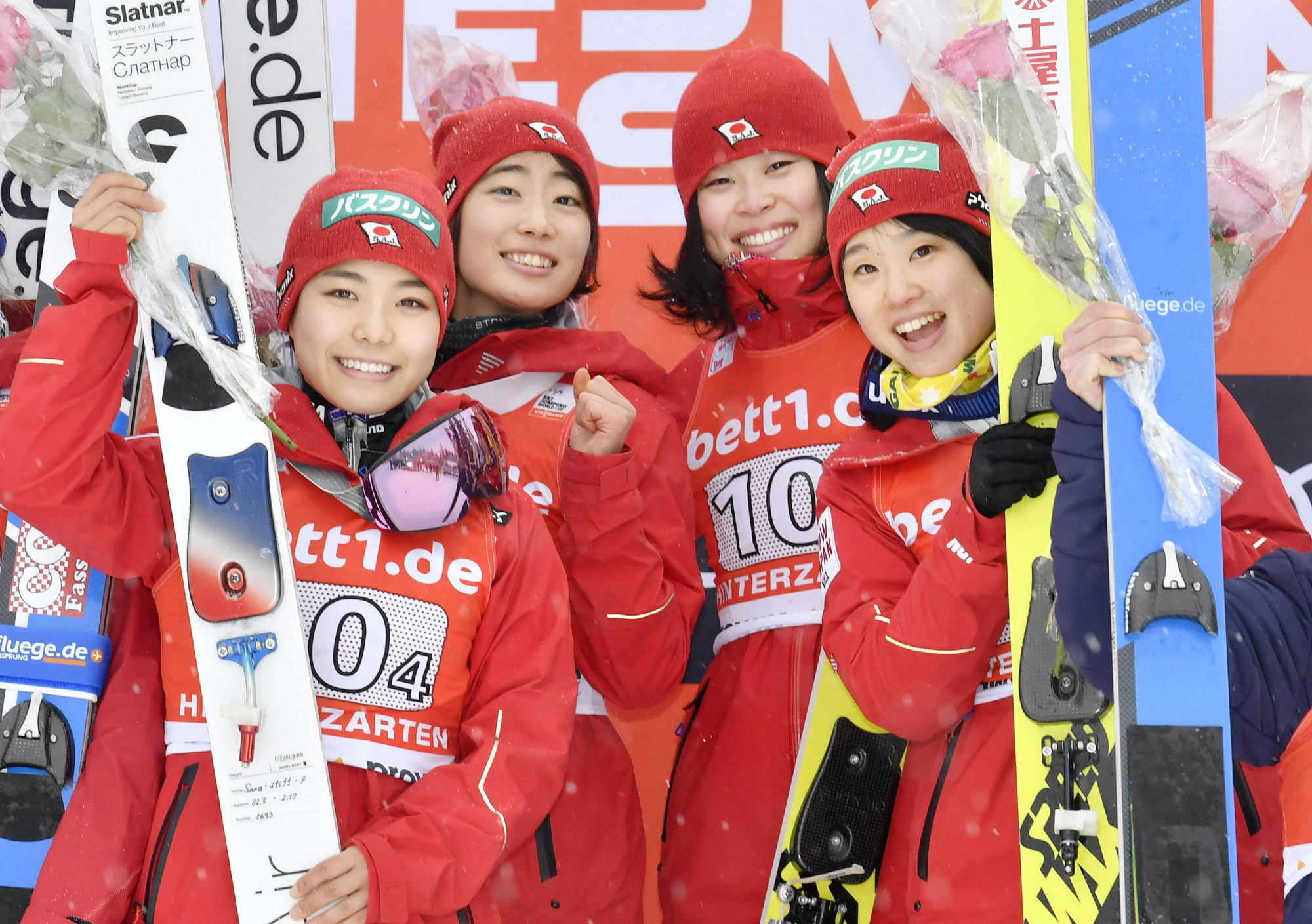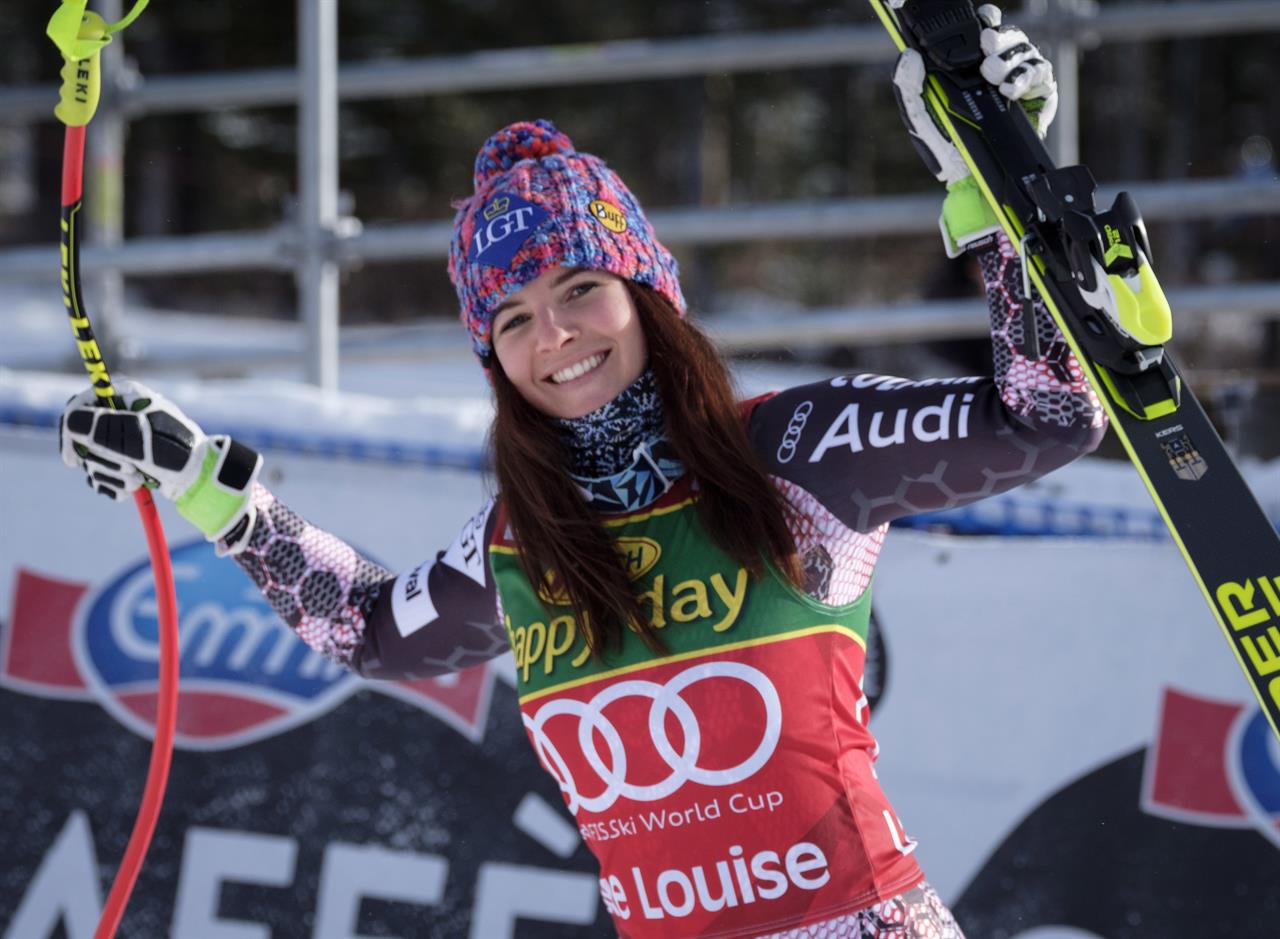Once the trail-blazing frontrunners of the beautiful game and epitomes of swagger on the field, the Netherlands are now teetering on the edge of football irrelevancy, the Oranje’s first consecutive major tournament misses in over three decades propelling the highest structures of Dutch football into a collective frenzy.
How could a proud footballing nation that finished third at the 2014 World Cup and was a shot away from lifting the trophy in 2010 spin out of control so dramatically in a handful of years? How did a berth of progressive ideas that revolutionised and reshaped the sport manage to become this trite, decaying entity, drained of its identity, their innovative notions of the past first appropriated, then upgraded by neighbours and competitors?
The only nation in history to play three FIFA World Cup finals without claiming the ultimate prize, the Netherlands blessed the footballing world with some of its greatest sides and players since Rinus Michels and Johan Cruyff co-geminated the inspiring Totalvoetball in the late 1960’s. Flooding Dutch football like the indomitable tidal streams on the low countries, this intoxicating philosophy based on ruthless pressing, neat passing and positional swaps powered the domestic outfits to immense success in the 1970’s and the national team on unforgettable campaigns every genuine football fan can babble about.
In fact, from the Cruyff and Johan Neeskens-led Clockwork Orange sides that lost the 1974 and 1978 deciders in heart-breaking fashion, past the brilliant generation chiselled in gold by Marco Van Basten’s iconic volley at the 1988 European Championships, through the hypnotic Dennis Bergkamp and the prodigious 1995 Champions League winners with Ajax, up to the contemporary days of Arjen Robben and Wesley Sneijder, who came within a whisker of swiping the World Cup from the hands of an emblematic Spain, there is so much to reminisce about.
And still, this very nation, whose footballing history was built on a combination of pulsating attacking football and such supreme talent that elevated the sport to a form of art unlike anything seen before, is now a stuttering machine, a laughing stock even, its main institutions incapable of churning out neither the style, nor the skill and results that do justice to the past.
As football minnows such as Iceland, Albania and Wales debuted at the 2016 European Championships, the Netherlands humiliatingly missed out on the expanded 24-team field, and they couldn’t do better in the 2018 World Cup qualifying, activating the blinking, screeching siren looming, somewhat quietly, over their football for a few years. Not anymore. It’s time to analyse and rethink the game in Holland and beyond, and in this article we’ll try to shed some light on the multiple reasons that compound the response to the main question facing Dutch football, particularly its (men’s) national team.
How did the pioneering Total Football derive into Total Flopball?
I – National Team failures: The aftermath of the 2014 World Cup
For most, the last image elicited by the men clad in orange is one of triumph. At the third-place playoff of the 2014 World Cup, a young Netherlands squad guided by the cantankerous Louis van Gaal crushed a traumatized Brazilian team with three unanswered goals, and it seemed the future was bright for the Dutch, their squad anchored by a mixture of experienced stars and an array of up-and-coming, just-entering-their-prime support pieces.

Daley Blind of the Netherlands (5) celebrates scoring his team’s second goal with Ron Vlaar (2), Georginio Wijnaldum (20) and Bruno Martins Indi (right) during the 2014 FIFA World Cup Brazil Third Place Playoff match (Robert Cianflone / Getty Images)
However, the seasoned mentor would soon leave the post for a new challenge at Manchester United, and what followed was a truly catastrophic qualifying campaign ahead of the Euro 2016, with Guus Hiddink, at first, and his assistant Danny Blind later, overseeing an inconceivable fourth-place finish in the qualifying pool. With only 13 pts collected in 10 games, the Oranje compiled more losses (5) than wins (4), and couldn’t muster a single triumph (1D, 5L) over direct rivals Czech Republic, Iceland and Turkey, who all headed to France.
This outcome resulted in a first European Championships miss since 1984, and a major tournament failure unseen since they were pipped by Portugal and the Republic of Ireland ahead of the 2002 World Cup, yet the changes hardly came by. Blind, who had lost three of four qualifying matches, was kept in charge despite his limited experience as a head coach – he had only guided Ajax for 14 months a decade earlier – and following the departures of assistants Dick Advocaat and Marco van Basten, the shortcomings of the former defender would quickly came into the fore.
Drawn into a group with France and Sweden in World Cup qualifying, the Dutch wrestled an important point in Stockholm at the pool opener, performing well in spite of the absence of captain Arjen Robben, but a month later a screamer from Paul Pogba proved enough to earn France a 1-0 victory in Amsterdam, placing the Dutch immediately behind the eight ball. Skip a few months forward, and the Blind experiment met his rational end after a resounding 2-0 defeat in Sofia, a game marked by the unfortunate debut of center-back Matthijs de Ligt, 17 years old at the time, merely two starts into his professional career and a prominent feature in both Bulgarian goals.

A shocking loss in Sofia marked the beginning of the end for Holland’s 2018 World Cup dreams (Reuters)
For the second consecutive campaign, the KNVB (Royal Dutch Football Association) was forced to replace the chief-commander in the middle of the journey, and this time, to no one’s surprise, the option fell on another patriarch of Dutch football, 70-year-old Dick Advocaat. He took over with back-to-back 5-0 routs in Rotterdam against the Ivory Coast (friendly) and Luxembourg, but dropped the ball in the first major test, the crucial visit to Paris.
Despite being thoroughly dominated by the hosts, the Netherlands were still alive at the hour mark in the Stade de France, trailing by a single goal, when Kevin Strootman was sent off and Advocaat reacted by committing to the irresponsible decision of urging all units forward in search of a tying marker, admittedly unaware that goal-difference could prove essential to the group’s decision.
Naturally, the nimble French forwards held a feast in the acres of space left available, smashing three more past Jasper Cillessen for a 4-0 defeat that sunk the Netherland’s World Cup hopes well before the final blow delivered by Luxembourg, throttled 8-0 in Stockholm hours after Advocaat famously laughed off a question forecasting such possibility.
Under the weight of an unsurmountable goal deficit, the Netherlands picked up a difficult victory in Belarus (1-3) before shooting for a near-miracle in the last game versus Sweden. They needed a preposterous 7-goal triumph in Amsterdam just to reach the playoffs, yet fell way short, bouncing out with 19 pts amassed by virtue of a 6-1-3 qualifying record. Not the sheer disaster of the previous campaign, nevertheless a second consecutive fiasco, unheard in the Oranje since the 1982-86 period, the fallout of Johan Cruyff’s generation.
At this point, savvy readers will point out the Netherlands returned to the biggest stage in 1988 and with a bang, an emergent, fresh crop of talent torching the opposition on the way to Holland’s only major title to date. Can we expect history to repeat itself in the short term?
II – Transitional crisis
Well, broaching comparisons between sides separated by almost three decades is always a tricky proposition, but it can be argued that some connecting dots are to be established between the origins of the two most recent stagnation periods in Dutch football and, in particular, their respective prominent faces.
In fact, even if their international appearances lacked the same flamboyancy and worldwide veneration reserved for the rampaging heroes of the 1970’s, the core group that led the country’s fortunes for the vast majority of the XXI century earned much of the same high esteem showered on the likes of Cruyff, Johan Neeskens, Ruud Krol or Arie Hann by virtue of their impressive collective accomplishments and individual accolades, which rank at the very top of every relevant statistical category in national team history.
Born between 1983 and 1984, we’re talking about veterans that peaked at the 2010 World Cup though their influence stretched from the mid-2000’s, past the latest Oranje appearance in a global stage (2014), and into the most recent disappointments, a longevity that ensures the moniker of a “golden generation”.

Wesley Sneijder, Robin van Persie and Arjen Robben back in 2006, the early days of their national team careers. Happier and easier times for the Netherlands (ANP)
The first to earn a senior cap, playmaker Rafael van der Vaart (now 35-years-old) wore the Oranje jersey 109 times, fourth all-time, until his time ended just before the 2014 World Cup due to injury, while striker Klaas-Jan Huntelaar (34) may have never been a full-fledged starter yet in almost a decade (2006-2015) of work plundered 42 goals, second only to Robin van Persie (34), whose 50 tallies obtained in 102 games make him the top scorer in national team history.
The former Manchester United and Arsenal standout is now a shadow of his former self, having returned to Feyenoord in January, but he continues to resist calling an end to his international career, contrary to Wesley Snejder (33), the quintessential number 10 who became the most capped (133) Dutch player before opting to retire from the National Team a few weeks ago.
Finally, this influential quintet is completed with Arjen Robben (34), arguably the only Dutch mainstay who can still be labelled as “world-class”; the perpetuity at Bayern Munich seemingly extending his shelf life as an impact player. The genial winger, who vaulted the squad at the 2014 World Cup, scored 6 times (7 matches) in the latest qualifying campaign before announcing his international retirement following the game with Sweden. Tallying twice in that night in Amsterdam, including a trademarked inside run and left-footed, curled shot that will linger as a perfect reminder of his brilliance, Robben then talked about the need to “pass the baton” to the next generation, casting a light on the tortuous reality: who will pick it up?
Looking at the group of established players that will comprise the nucleus of the Dutch national team moving forward, the pickle isn’t exactly the lack of good players entering the prime of their careers or evolving into solid performers, but the bare cupboard of transcendental talents and top-level performers plying their trade in Europe’s heavyweights in the same way minor Dutch factions once cohabitated in Barcelona, Milan or Madrid.
Truth to matter, peruse the rosters of perennial Champions League contenders these days and you’ll encounter the aforementioned Robben in the German giants, Daley Blind, a utility man at Manchester United who, ideally, wouldn’t be the first option at any position, and FC Barcelona’s backup goaltender Jasper Cillesen. OK, if you’re feeling gracious, let’s expand the net to include Liverpool’s Georginio Wijnaldum, once a can’t miss prospect who didn’t blossom as expected, teammate Virgil van Dijk, recently moved for a defenseman’s world record fee, and AS Roma’s Kevin Strootman, who missed the large part of two consecutive seasons (2014/15 and 2015/16) due to injury. Seven names…

Several Dutch players surround England’s Dele Alli in a recently friendly match in Amsterdam. It will be, necessarily, a different Oranje moving forward (Associated Press)
Furthermore, while Blind, Cillesen and Wijnaldum played prominent parts at the 2014 World Cup, some of the other youngsters who caught the eye under Louis van Gaal failed to evolve as expected in order to reach the European elite. Snapped out of Feyenoord after the tournament in Brazil, center-backs Bruno Martins Indi and Stefan de Vrij are perfect examples of it, as their respective careers stalled in the meantime, the former falling out of favour at FC Porto, the latter encountering injury problems during his stay at SS Lazio. Remember diminutive midfielder Jordy Clasie, once likened to Xavi? Incapable of carving his space during a two-year spell at Southampton, he’s on loan in Belgium this season hoping to revive a dwindling career.
And what about Van Gaal’s crown jewel, winger Memphis Depay? Dazzling for PSV in 2014-15, he botched the opportunity at Manchester United and is only now, at 24 years old, displaying glimpses of his tantalizing potential in Lyon, teasing with incredible pieces of skill but also showing that some ripening is still needed before he can be expected to pull all the strings for the Oranje.
As a result of this absence of go-to options or even a coherent group ready to bridge the gap, one might be compelled to the notion that something went terribly wrong in respect to player development in the Netherlands over the last decade-plus. Or, perhaps, they’re simply facing a momentary talent famine?
III – Dropping off the radar: lost generations and a shifting recruitment pool
Far from a flawless predictor of success at the senior level, repeated excellence at the youth levels is as good an indicator of the health of a development system as we can find in football, not least because it tends to lead into waves of talent and a well-stocked pool at the top of the pyramid.
Spain and Germany, the two most accomplished European nations of the last decade, are obvious examples of this, and while it’s been well documented that the vast majority of their best players previously tasted victory at the U-17, U-19 or U-21 level, the reality is, in hindsight, the Netherlands ought to place at a similar level.
After all, of the five UEFA (men’s) trophies that are exposed on the KNVB cabinet, four were captured in the last dozen of years, and the back-to-back triumphs at the U-21 European Championships in 2006 and 2007 emerge as a cautionary tale in this exercise.

The Netherlands won the Under-21 European Championships at home in 2007. Do you dare to name any three of the boys in the image? (Getty)
Positioned on the final part of a youngster formative years, with most participants already well established amongst the professional ranks, this showcase event is, usually, a final stepping stone towards stardom for the most promising individuals however, due to a variety of reasons, for the large majority of the Dutch players that comprised the two aforementioned squads, the continental championship, more than a peak in terms of silverware, functioned as a tangible zenith in performance.
Indeed, a total of twenty-two players from those rosters earned full international debuts at some point, yet only three stuck around for a meaningful period of time (Klaas-Jan Huntelaar, center back Ron Vlaar and winger Ryan Babel) whereas the likes of Hedwiges Maduro, Urby Emanuelsson, Demy de Zeeuw or the 2007 Golden Player of the tournament, Royston Drenthe, flamed out as soon as they were thrusted into the spotlight for their clubs or set foot abroad.
Incidentally, since those consecutive triumphs, the Dutch failed to qualify for four of the last five U-21 tournaments, making an appearance in 2013 to reach the semi-finals with many of the players that starred one year later in Brazil (De Vrij, Blind, Martins Indi, Depay, Wijnaldum, Clasie) and a few from whom a lot was expected to no avail (Adam Maher, Marco van Ginkel, Ola John).
Consequently, it seems the transition from the youth ranks to the highest-levels of professional football (especially outside of the Eredivisie) has proved traumatic for many of the country’s best talents lately, and as we delve further into the system, this theory gets further validation.
A regular presence (5 of last 8) at the Under-19 European Championships, the Netherlands made it to the final four only once (2017) in that span, therefore failing to qualify for any U-20 World Cup since 2001 (they hosted in 2005) and also providing a stark contrast with their exceptional U-17 performances as of late. On the last ten U-17 Euros, the Netherlands reached six semi-finals, advanced four times to the decider and captured the title on two occasions, 2011 and 2012, both times defeating Germany in the Final.

Senior Dutch internationals Memphis Depay (#11), Tonny Vilhena (#10) and Karim Rekik (#4) were part of the U-17 European Championship success in 2011 (UEFA)
Some of the members of those winning generations, now aged 23-24, have already broken into the main Oranje (Nathan Aké, Karim Rekik, Terrence Kongolo, Jetro Williams, Memphis Depay, Tonny Vilhena), yet none looks primed to grow into a true game-changer as many anticipated the likes of Vilhena or 2011 Best player of the tournament Kyle Ebecílio would become. And if you’re wondering whether it is still too early to draw conclusions from those classes, look no further than 2012 runners-up Germany, who featured Julian Brandt and Leon Goretzka, two influential figures on the last Confederations Cup, or France, already reaping dividends from the likes of Anthony Martial or Thomas Lemar.
In any case, we can safely assume that gifted footballers are still sprouting on the fields of the Netherlands, and whatever is belying their full maturation has to do with nurturing, nonetheless there’s another pressing issue that needs to be addressed in regards to the talent pool available in the country.
A former maritime and merchant powerhouse, the Kingdom of the Netherlands held possessions around the world well into the second half of the XX century, when the decolonisation fever eventually hit their enclaves and outposts in the Caribbean. Still, the Dutch were able to keep a grip on some overseas territories (Curaçao, Aruba, Sint Maarten and the Caribbean Netherlands) until very recently and sports, as many other areas, got important contributions from the diaspora for a very long time.
The birth land of thousands who moved stateside in search of better opportunities, Suriname, an independent country since 1975, particularly stands out amongst the former Dutch territories as plenty of the Netherlands’ football stars of yesteryear carried Surinamese descent, yet that spring has also dried up significantly over the last few years. Where once the Dutch mined Patrick Kluivert, Ruud Gullit, Frank Rijkaard, Edgar Davids or Clarence Seedorf, legends that perfectly combined the technical proficiency of local football-education with South-American flair and exuberance, they’re now tied to Quincy Promes, Georginio Wijnaldum, Ryan Babel or Virgil van Dijk, and the gap is still to be filled with impact players hailing from the melting pot that is the Dutch society today.

Oranje legends Clarence Seedorf, Patrick Kluivert and Edgar Davids line up before a match against the Czech Republic at the Euro 2000.
On the current national team, you’ll find players with origins in Tunisia, Angola, Mozambique, Ivory Coast, Ghana or Guinea-Bissao, however plenty of others rose up the ranks under the watchful eye of the KNVB only to later change alliances, agreeing to represent the country of their parents. In most cases, the loss won’t prove substantial, but since quality, more than quantity, is what usually makes the difference at the top levels, someone as talented as Morocco international and Ajax midfielder Hakim Ziyech, who could have eased the transition following Wesley Sneijder’s decline, shouldn’t have escaped.
So, as we’ve established that some of Dutch football’s decline stems from flawed player development as well as an inability to syphon the best of the evolving Dutch society, now it’s time to examine another important aspect: the application of their footballing philosophy.
IV – Identity: the strenuous compromise between style and results
Bold, enthralling, beautiful and fun. Dutch football used to be the benchmark of an aesthetically pleasing experience in pure footballing terms: slick passing, and positional and spacing fluidity the guiding principles for a country that grew to favour style over substance. So much that almost unanimous acclamation disguised the fact that the Dutch national team didn’t win as much as it should have in its glorious eras; trophies left on the hands of others and painful losses shrugged off in the name of adoration by neutrals and prudish adherence to defining principles and ideals.
Such approach flew through the decades, generations of artists collapsing in the moment of truth time and time again, but still earning appraise from plaudits. It’s no coincidence then that Johan Cruyff once posited that ”There is no medal better than being acclaimed for your style” neither that the 2008 European Championships marked, perhaps, the last time such saying resonated, the Netherlands commanded by Marco van Basten displaying the same finesse of the former striker as they swept through the group phase with rousing triumphs over France (3-0) and Italy (4-1) only to be dumped out by a Russian team led by fellow Dutch Guus Hiddink.
After that competition, though, van Basten stepped down and new manager Bert van Marwijk turned things around 180°, leading the team to the 2010 World Cup Final with pragmatism, cohesion, discipline and, might we say… a lot of hard graft, embodied to perfection by the midfield vigour of Nigel de Jong and Mark van Bommel, an unmovable stab of concrete in front of the defensive sector. Ultimately defeated by Spain in one of the most rugged finals in history, the National team members were pelted back home with accusations of “betrayal” for renouncing to the traditions of Dutch football, their “anti-football” methods – as dubbed by Cruyff itself – an “ugly, vulgar” compromise forged in the name of victory at all costs.

Spain’s Iker Casillas stops Arjen Robben’s point-blank chance in a crucial moment of the 2010 World Cup Final (Getty)
We’ll never experience how history would have unfolded had Arjen Robben’s shot evaded the outstretched leg of Iker Casillas in the night of Johannesburg, but we know that the KNVB doubled down on the matter-of-fact approach in 2012, substituting van Marwijk, following a disappointing European Championships, with Louis van Gaal. Setting up a defensive 5-3-2/3-5-2 hybrid that relied more than ever on defensive compactness, blistering counter attacks and the individual brilliance of a couple of names (Robben, Van Persie), the Netherlands’ option was vindicated when they extracted revenge from the ball-hugging wizards of Spain in a 5-1 drubbing in the opener in Brazil, before proceeding to get within a penalty-shootout victory of returning to the World Final.
And then, in spite of getting closer to glory with this ruthless, pragmatic mind-set than at any time throughout the previous two decades, the national purists brandished their forks again to demand a return to the possession-based blueprint, and their pleas were acquiesced. Hiddink, Blind and Advocaat imposed the return to the 4x3x3 formation that’s imprinted into the fabric of Dutch football, however the results were nothing short of calamitous. Why?
The straightforward answer lies in the enormous progresses experienced in the game of football, particularly in the tactical side, but, mostly, on the realization that Totalvoetball has always been about so much more than a mere formation or striving to hold the ball just for the sake of it. Built around the whole idea of space and time and how it can be maximized (on offense) and shrunk (on defence), incisive possession football necessitates quick-thinking, reactivity, creativity and awareness, traits that aren’t in abundance on the current Dutch squad, as well as fine-tuned collective movements, complementarity and superior understanding between players.

Consequently, more than the lack of skill and physical attributes to replicate the frenzied demands of an intense, high pressing game or to formulate intricate passing sequences, the Dutch national team simply can’t sustain such a complex, challenging model because it’s not able to foster familiarity without a solid foundation over which to instil the main attacking principles. Cue the “sterile possession” paradigm that grace the Netherlands today, expertly parodied by the late Johan Cruyff, one of the fathers of the ideology, as the “world champions [of] passing sideways and back”.
For instance, try to catch a national team game – under the previous regime – against half-decent opposition and it’s distressing to note the Netherlands’ inability to devise a clean breakout from the back, with the ball slowly passed around the defenders and deep-lying midfielder, the buildup process unable to draw adversaries out of their defensive shape in order to create space for a penetrating pass that kick-starts the offense.
Moreover, as the ball circulates around the perimeter and sometimes up the flanks, underlapping or overlapping runs are few and far between, interior movements to explore pockets of space in between, devise passing triangles or create overloads scarce, and positional fluidity, a staple of Total Football, a foreign concept. In result, danger is only generated from the outer channels, and in the few instances a winger manages to receive the ball up the field, he usually has to resort to hopeful crosses towards the box as the central midfielders are mostly overlooked in the construction phase and reserved a secondary role in the final thirds.
With Robben, Sneijder and van Persie in their prime, the Dutch may had been able to live with this primitive, predictable style of football, but the palpable shortage of difference-makers can’t masquerade and explain everything, much less deficient organization and the bevy of defensive inconsistencies that haunt many Dutch teams. An obvious coaching issue exacerbated at the national team level by subpar management (more on this after the jump), nevertheless also a clarion call for a country that needs to realize that nostalgia and reviving used formulas isn’t playing to one’s strengths.

Johan Cruyff runs at Franz Beckenbauer during the 1974 World Cup Final won by West Germany
Emulating Spain and Germany, who have thrived on the possession-based dogma, is easier said than done without a lot of groundwork on a daily basis and, necessarily, at the club level. In fact, the eminent Dutch teams of the 1970’s and 1980’s were concocted by merging strong blocks from Ajax, Feyenoord and PSV, tapping on mechanisms and mutual partnerships that could be easily transposed to the international realm, and, evidently, the same happened over the last few years with Spain (2008-2012) and Germany (2014), whose subtract of success was grinded away at FC Barcelona (supplemented with superb Real Madrid individuals) and Bayern Munich.
Naturally, the biggest clubs in the Netherlands aren’t afforded the opportunity to keep their players long enough to build crucial chemistry, and with Dutch players scattering across Europe, it’s impractical to aim for the same lofty notes of decades ago. If Holland aspires to get back to the top of the game, mindlessly mirroring the past it’s definitely not the way to go, and the same extends to the methods implemented by the men tasked with orchestrating from the dugout.
V – Coaching: the merry-go round and a class stopped in time
Since the fourth and last tour of duty (1990-1992) undertaken by the emblematic Rinus Michels, the leading job in Dutch football has been occupied by one of two types of coaches: the members of the old guard, elder statesman who earned respect all around the World over the last three decades, and raw faces, usually former players with limited international experience at the time of appointment.
In regards to the first group, most football fans can name the trio of men that, every time the Dutch job opens up, are automatically placed on the short list of candidates, their reputations almost granting permission to take turns between club posts. Since 1992, Dick Advocaat (70 years old), Louis Van Gaal (66) and Guus Hiddink (70) have trained the national team in 7 different occasions (3+2+2) and for a combined 12 years (4+3.5+4.5), but with Advocaat stepping down, van Gaal in a sabbatical period following his departure from Man United in 2016, and Hiddink similarly in reclusion after an interim stint at Chelsea in 2015-16, none of those options was on the table ahead of the new two-year qualifying cycle.

Netherlands’ Robin van Persie celebrates with head coach Louis van Gaal after scoring a goal during a 2014 World Cup match against Spain (AP Photo/Bernat Armangue)
Likewise, it was highly implausible the KNVB would tap one of the other recent incumbents, their curriculum and post-Netherlands endeavours a forewarning that a healthy mix of experience and future vision was vital in these turbulent times. Take Frank Rijkaard, for example, who led the nation to the semi-finals of the Euro 2000 in his first managerial experience, played a huge part in the rebirth of FC Barcelona between 2003 and 2008, but then hiked through Turkey (Galatasaray) and Saudi Arabia (National team) before falling off the radar in 2013.
The announcement of Rijkaard’s retirement came last December, at age 55, and followed shortly after one of his former teammates, Marco Van Basten, also put his coaching prospects on hold. Streamlined into the Dutch job in 2004, The Swan of Utrecht’s subsequent coaching ventures at Ajax, Heerenveen and AZ Alkmaar failed to bear fruits, and after serving time as a KNVB employee, filling managerial and assistant roles, he joined FIFA as the “Chief Officer for Technical Development”.
A UEFA Cup winner (2002) with Feyenoord, Bert van Maarwijk’s was a more accomplished manager at the beginning of his four-year tenure (2008-2012), but after the disastrous Euro 2012 campaign which determined his exit, he also hasn’t racked up the achievements, following up the Dutch job with an embarrassing 143-day spell at Hamburg, a stint in Saudi Arabia cut short by contract disagreements, and the recent appointment to lead Australia next summer in Russia. And then, obviously, there’s Danny Blind, for some reason groomed by Hiddink to succeed him even if his résumé features all of one year (2005-2006) as Ajax’s head coach and plenty of labour as an anonymous assistant.
Still, the fiasco of Blind’s 20-month experiment finally gave the KNVB enough pause to launch a thorough process in order to select the right man for the job, and while many wanted them to cut right through the established practices and go outside the box (or outside their borders..), they eventually settled for another uninspired choice, another kick at the 1988 class of European Champions.
Boasting a solid career at home and abroad, Ronaldo Koeman’s name was always bound to rally a large consensus, as he remains the only person to have not only played but also managed the Dutch “Big Three” of Ajax, PSV and Feyenoord, and the man who was spurned in favour of Hiddink back in 2014 finally got his turn. Pointing to a solid track record mentoring young players and thriving when the overall quality at his disposal was underwhelming, the 55-year-old was judged to embody the perfect profile considering the current circumstances facing the Dutch National team, and the early signs are certainly promising.

Ronald Koeman, manager of the Netherlands (L), looks on from the team bench prior to the international friendly against England last month (Dean Mouhtaropoulos/Getty Images Europe)
Taking the reins surrounded by a renovated support staff, including new sporting and general directors, Koeman led the Netherlands to a splendid 3-0 victory over European Champions Portugal in the latest round of friendlies, his novel 5-2-3 providing more options to build through the thirds and occupy the half spaces in possession, yet one can’t shake the feeling Koeman’s appointment still sounds as a lost opportunity to revamp the entire status quo in the country.
As mentioned before, times have changed and, as the Netherlands display some difficulties to accompany the evolution brimming around the continent, their coaching landscape functions as a paramount example worth exploring, an area where the Dutch are still programmed to do what they’ve always done. For instance, the default option for top clubs in Holland is still the appointment of former club players to run the main show in spite of limited previous experience. Phillip Cocu (PSV) and Giovanni van Bronckhorst (Feyenoord) are the most recent examples of this learning-on-the-fly approach, and while they had no problem padding their CV with national honours, deficiencies end up being exposed in European competitions or as soon as they venture abroad and onto more competitive environments, like happened with Frank de Boer, a four-time Dutch Champion with Ajax who lasted less than 3 months in his most recent positions (Inter Milan and Crystal Palace).
Conflictingly, the type of academy-trained, scientific-inclined minds that are flourishing all over Europe face uphill battles to land top jobs, with Peter Bosz (53-years-old), who guided Ajax to the Europa League final last season, and new Ajax manager Erik ten Hag (48), the Rinus Michels Award winner in 2015-16, shining as beacons of hope for a minority that, for better or worse, will eventually elbow their way to the forefront in short order just like it did, to cite a clear-cut success case, in neighbouring Germany.
Alternatively, it’s also not difficult to make the case that the foreign path should be explored both at the club and national team level since, on a deeper level, it finds inspiration on the history of the Netherlands as a country and football nation. In fact, well before their influence spread throughout the world, also in footballing terms, the Dutch were renowned for being unusually receptive to exterior ideas and expertise, their cosmopolitan capital a fervent hub of innovation, opened to learning, crafting and improving methodologies that would be shared with the world. Ultimately, that was the genesis of Totatvoetball, how it spawned and blossomed under Michels and Cruyff and, it can be argued, the principal lesson the Dutch should absorb looking back at their history.

The legendary Rinus Michels holds aloft the 1988 European Championships trophy won by the Netherlands, their only major (men’s) international honour to date (Getty)
Therefore, at a time Holland has grown (too) protective of its footballing principles, rooted to outdated theories and afraid of testing new tactics and concepts, the traditional notions simply have to be challenged and deconstructed. And to ensure a full reboot, not unlike what Germany (yup, them again) went through in the beginning of the century, they should (re) open their borders like they’ve done in all other walks of life. There’s no way around it.
The Austrian Ernst Happel, who sat on the bench at the 1978 World Cup, was the last foreigner to lead the Dutch National Team, and soon they may have to reconsider it again because sometimes it takes swallowing the pride to overhaul an entire system or, in this case, to shake the excessively inward-looking, conservative mentality that has gradually seeped into Dutch football. And, in addition, a successful stint by a foreign national manager might open the floodgates and convince domestic clubs to dip into uncharted waters, scour the global market and think progressively when they need to fill managerial voids, which can only enhance the future prospects of a national league in its own state of crisis.
VI – The National League: sequels of an abrupt fall from grace
So far we’ve focused primarily on the national team and the broader problems of Dutch football, however another aspect has greatly contributed to the demise of the game in the low lands: the downfall of the Eredivisie, the National League, and consequently of the major football institutions in the Netherlands, once among the most renowned in the world.
In the 1970’s, the apogee of orange football, the local clubs were the watermark of Europe, a reality inked in silver with the 9 European trophies conquered during the decade, starting with Feyenoord’s European Cup success in 1970 which would be followed by three consecutive titles for Ajax Amsterdam. Meanwhile, PSV Eindhoven collected the UEFA Cup in 1978 and a decade later would herald another run of Dutch success, with their 1988 European Cup success preceding five other international trophies until 1995, when Van Gaal’s kids brought the Champions League, European Super Cup and Intercontinental Cup to Ajax’s museum.
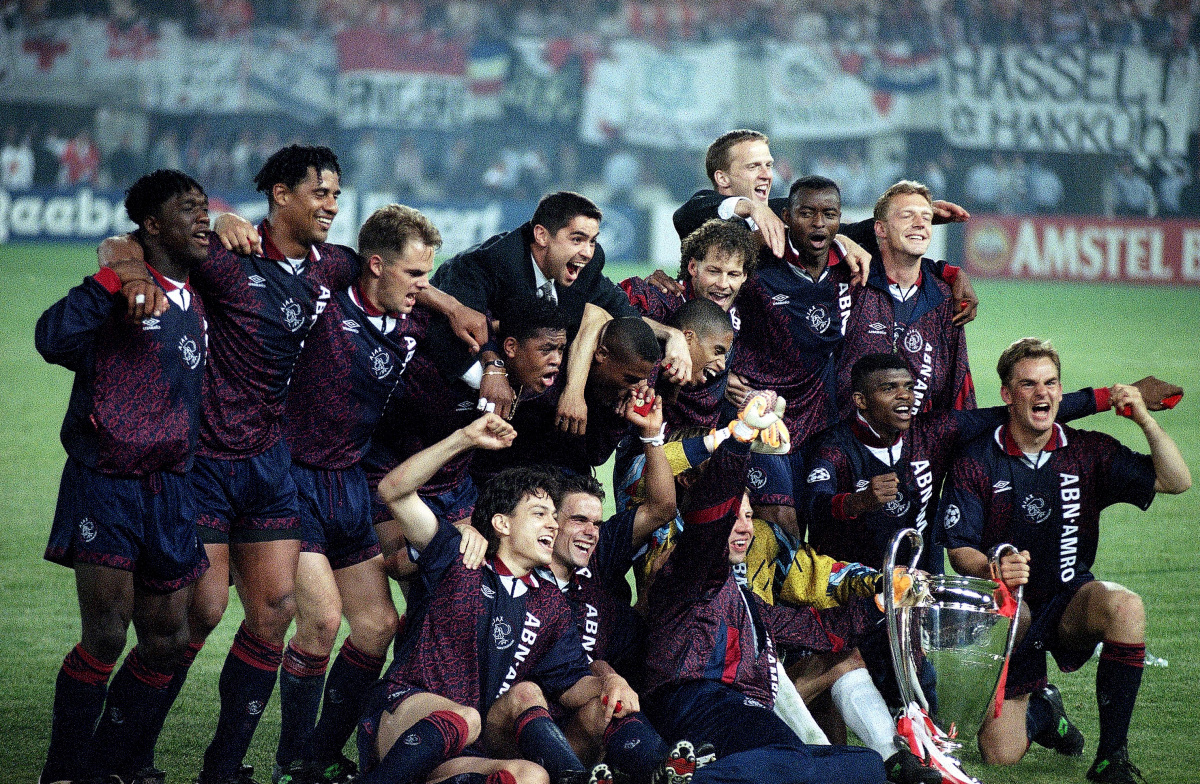
Members of Ajax’s 1995 Champions League winning team celebrate. They are the last to bring the iconic European Cup to the Netherlands (AP)
However, the seismic Bosman ruling came into effect in late 1995, and the profound implications that would unfold in the transfer market demarcated the moment Dutch clubs started to lag behind their European counterparts. It’s no coincidence that since the turn of the century a single continental honour is on record, the 2002 UEFA Cup won by Feyenoord at their own De Kuip stadium, and the descent into obscurity gives no signs of halting despite Ajax’s sentimental run to the 2017 Europa League Final.
Actually, more than the harbinger of a renaissance, De Godenzonen’s latest accomplishment is seen as a blip in the radar for a country that hasn’t produced a Champions League quarter-finalist since 2007 (PSV) and barely groaned, in wistful resignation, as all five representatives in the 2017-18 UEFA club competitions got emphatically bounced out by the end of November. Defending National Champions Feyenoord (Champions League) and Cup-holders Vitesse Arnheim (Europa League) qualified directly to the group stage of their respective competitions before mustering just two wins combined, while Utrecht, PSV and Ajax were eliminated in the Europa League playoffs, with the Amsterdam giants taking just three months to go from surprise finalists to a first-year without European competition in more than five decades…
Accordingly, the nation’s top-flight is currently ranked 14th in the UEFA League rankings, miles away from the top-five, Russia and Portugal, but also chasing the likes of Belgium, Ukraine, Turkey, Switzerland and the lowly Austrian and Czech league. Definitely embarrassing for a country of such tradition, although a situation not borne out of a lack of fan engagement, as corroborated by the attendance figures of 2016-17. No matter how dispirited by the progress of their football, the locals continued to flock to the stadiums in good numbers, with the Eredivisie’s average turnout – set at more than 19k per game – ranking eighth in Europe, or the highest outside the five largest markets (England (EPL + Championship), Germany (Bundesliga 1 and 2), Spain, Italy and France).
Nevertheless, this encouraging gate numbers fail to amount to much when the sizable economic gulf to other nations imposes a sad reality manifested in a sharp loss of competitiveness at the senior levels and the establishment of a vicious cycle that proves hard to break. Undeniably, athletic Dutch kids are still attracted to play football and the clubs continue to educate and graduate youngsters into their squads with incredible frequency – and, perhaps, more prematurely than ever -, yet clubs from abroad come knocking on the door so early that many promising players leave their homeland before being ready for the step up and fizzle out, lost in the shuffle at foreign academies or languishing on the benches until they’re forced to take a step back and return home with confidence shattered and the lustre all but gone.
The list of once highly-rated prospects plagued by this issue encompasses the likes of Luuk de Jong and Marco van Ginkel, both currently at PSV, Ricardo Kishna (Den Haag), Zakaria Labyad (Utrecht) or Luc Castaignos (Vitesse), however the revolving door gives no signs of ceasing at every transfer window; the most recent players fleeing the nest before fully asserting themselves being 22-year-old right back Rick Karsdorp (Feyenoord to Roma), 21-year-old midfielder Riechedly Bazoer (Ajax-Wolfsburg) or 22-year-old winger Anwar El Ghazi (Ajax-Lille).
/cdn.vox-cdn.com/uploads/chorus_image/image/54719823/632399032.0.jpg)
Chelsea FC loanee Marco van Ginkel is unlikely to ever find his way back to the Premier League powerhouse (Dean Mouhtaropoulos/Getty Images)
Additionally, such annual exodus has another major repercussion, the watering down of the Eredivisie’s level of play as clubs can’t afford to replenish the rosters by recuiting the type of mature players that would, immediately, fill the shoes of the departed and, in turn, end up choosing richer locations. From here, a chain reaction emerges, with players easily snapped out because they can’t properly develop at home due to unsatisfactory competition (and coaching), and teams reeling, particularly internationally, since many revenue streams are dependent on results and, consequently, on the overall quality of the squad.
Once the perfect breeding ground for talents from all over the world, the gateway for the likes of Ronaldo Nazário, Romário or Luis Suárez, Dutch clubs haven’t exactly lost the eye for spotting quality, or even the appeal for a youngster from Belgium, Denmark, Mexico, Scandinavia, the Balkans or the Baltics, just to cite a few examples, yet the story arch for a foreign signing is quite similar, as they also arrive earlier now and say goodbye when fans had barely met them, relegating the Dutch top-flight to the role of a, de facto, conveyor belt and supplier of the dominant European leagues.
VII – Rays of sunshine: from the prototypical Dutch player to the stars of tomorrow
Running parallel to a decaying national league that fails to prepare its athletes to the speed and intensity of the top-tier competitions, the Dutch player developed at home is also known to display a few characteristics that may play a small part in the current futility of the game in the Netherlands.
While as smart, versatile, technically proficient and tactically astute as any other, most Dutch products seem to have been coaxed out of some of the best attributes former generations enjoyed: the self-determination to express themselves in the middle of collective tenets and the audacity to think and execute differently. Some of this can be pinned on the decline of street football and the consistent football practices instructed worldwide, but there’s some basis to the notion that the Dutch have succumbed to the error of culling individual flair in favour of purely diligent players, who can read the game and fulfil a routine task with the efficiency of the best although they do struggle solving unexpected problems and going off-script.
Leaving behind the reality that this delicate balance between individualism and collectivism was pivotal during the Oranje’s heyday, experience also dictates that some of the quirks of Dutch players of the past are gone since today’s players seemingly perform better under a manager who tells them exactly what to do – like Louis Van Gaal – rather than someone who challenges and affords more leeway.
Additionally, with this mutation in the genetics of the Dutch game, their positional strengths have shifted away from the roles that demand more artistry and improvisation. Once a nation brimming with creative offensive players, the chivvying of dribbling, for example, is responsible for the sparse number of Dutch wingers that excel in one-on-one confrontations or look to execute in crowded spaces. And those that exist frequently butt heads with their clubs and coaches, like happened with Memphis Depay at PSV.

Sweeper, midfielder, goalscorer. The incomparable Ruud Gullit symbolized the wild nature of Dutch football. In the picture, he is in action against the URSS at the Euro 1988 (Pichon/L’Équipe)
Furthermore, the elegant ball-playing defenders that were key features of legendary Dutch sides haven’t been seen in a long time, which is a shame for the nation that pioneered the sweeper role where Ruud Krol, Ronald Koeman, Danny Blind and Frank de Boer excelled by mastering the art of the long pass, advancing from the back line and becoming an additional midfielder that would confuse the opposition and open passing lanes.
Fortunately, though, there are a few positive signs regarding these problematics, not only with a change in mentality that was evident on the free-flowing Ajax side that dazzled in Europe last season but, particularly, in the form of the rising tide of Dutch talent, whose development should continue to be handled with extreme care. For a case in point, look no further than the most exciting offensive talent to emerge in the country in a long time, 18-year-old Justin Kluivert (Ajax), who is already dealing with a lot of pressure, both for his notable bloodlines – he’s the son of Patrick Kluivert – and magnetic skills with the ball at his feet, namely the ability to eviscerate defences with his dribbling and close control.
The pacy wing man is already hailed as the heir apparent to Robben, however there’s more help on the way, including two well-rounded midfielders that impress for their intelligence in possession and smart passing, 20-year-old Donny van de Beek (Ajax), who has already bagged over a dozen of goals this season, and AZ Alkmaar’s crown-jewel, the gangly Guus Til, who complements his technical skills with the ability to win aerial challenges in the middle of the park.
Still, it is in another young midfielder that lies the biggest potential to reshape the face of Dutch football, 20-year-old Frenkie de Jong (Ajax), a mesmerizing talent for his ability to effortlessly fill any role in midfield due to his vision, passing range and versatility, but also a player that is thriving this season from deeper areas, used as a libero with free reign to define the pace of play, dribble out of the back and stride forward in mazy runs, raising comparisons to Franz Beckenbauer or a young Ruud Gullit.

The 20-year-old Frenkie de Jong is one of the diamonds of Ajax’s squad (ProShots)
Moreover, the cupboard in defence also features left-footed center back Rick van Drongelen, who made a seamless jump from Sparta Rotterdam to Hamburg at age 19 and is garnering admirers for his impressive Bundesliga debut season, Feyenoord’s Jeremiah St. Juste (21 years old), a bright spot during his team’s Champions League campaign, and, of course, the precocious Matthijs de Ligt. Already an Oranje first-team indisputable, he took over the captaincy duties at Ajax Amsterdam at age 18, and his physical and emotional maturity is a sight to behold, with de Ligt displaying outstanding composure on the ball, the ability to pick out passes of any range from the backline and decisiveness in confront with opposing forwards, where the teenager flashes uncanny speed and sense of timing.
Provided the development of these building blocks goes smoothly, and they continue to expand the base, there’s a potential for a return to the winning ways to come in the medium-term for the Netherlands, and such timeline can even be accelerated if they could add two crucial pieces to this cohort. An elite goalkeeper that would take the mantle from Edwin van der Saar, one of the first stoppers proficient with the ball at his feet and versed on the advantages of assuming a meaningful role in the team’s circulation, and a skilled, prolific marksman to spearhead the line and push incumbents Vincent Janssen and Bas Dost down the pecking order, continuing the heritage of Marco van Basten, Patrick Kluivert, Ruud van Nistelrooy and Robin van Persie.
Conclusion
Few doubts exist the Netherlands have hit rock-bottom, that a country and a national team whose ground-breaking approach to the game merited cult status are nowadays in a state of trauma, probing for solutions and a new direction in a world that has moved on from their philosophy. Still, the best part about floundering is the sense there’s only one way to go – back up – and, sooner or later, the vibrant orange jerseys will, unequivocally, marvel the football world again.
A litany of errors and missteps have been made at all levels, from a national federation that has struggled to find answers to stop the slide down the sport’s hierarchy, to the clubs, unable to compete with counterparts from countries that face similar challenges in a new economic reality that favours the giants, a coaching class that lacks the outside-the-box, forward-thinking attitude of yore, and players that can’t simply rely on natural talent and smarts alone, however no one disputes the Netherlands are still one of the sport’s guardian nations.

Dutch fans wave flags during the Women’s Euro 2017 Final in Enschede, Netherlands (AP)
That much is evident in the streets, on the slick fields of the lowlands, on the colourful fans that, while distressed with the current situation, keep showing up in major numbers and, from time to time, on the biggest football meetings, as last summer’s triumphant Women’s European Championships exemplified.
It may take more than anticipated to rebuild Dutch football from the ground up, to advance coaching and management practices that are lagging behind their competitors, to groom and mould the stars of tomorrow, to recover the respect cultivated over four decades and, especially, to come to terms with the country’s stand in this ever-evolving football landscape where knowledge is widely available to everyone who seeks it, but others countries went through their own soul-searching periods, sought inspiration outside, overhauled their processes and are now reaping the benefits of their methodical approaches.
The “neurotic genius” of Rinus Michels and Johan Cruyff turned around football history in a country that was an afterthought for the first half of the XXI century, and if the Dutch hope to avoid a return to this faraway past, the non-conformist, inventive aura instilled by those visionaries should guide them out of the crumble and through the paradigm-shifting changes needed. Even if those include the hard-to-digest decisions they’ve been dreading and putting off for clashing with their romantic, self-professed football notions and the idealistic “Dutch-way” of doing things. Because, it goes without saying, football is rarely beautiful when one is losing.






































/cdn.vox-cdn.com/uploads/chorus_image/image/54719823/632399032.0.jpg)



